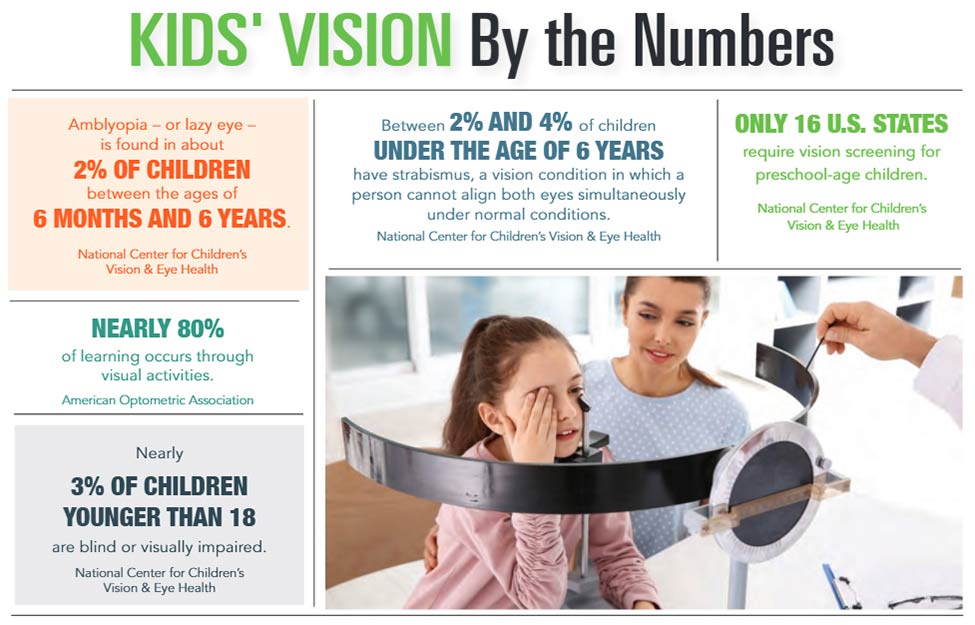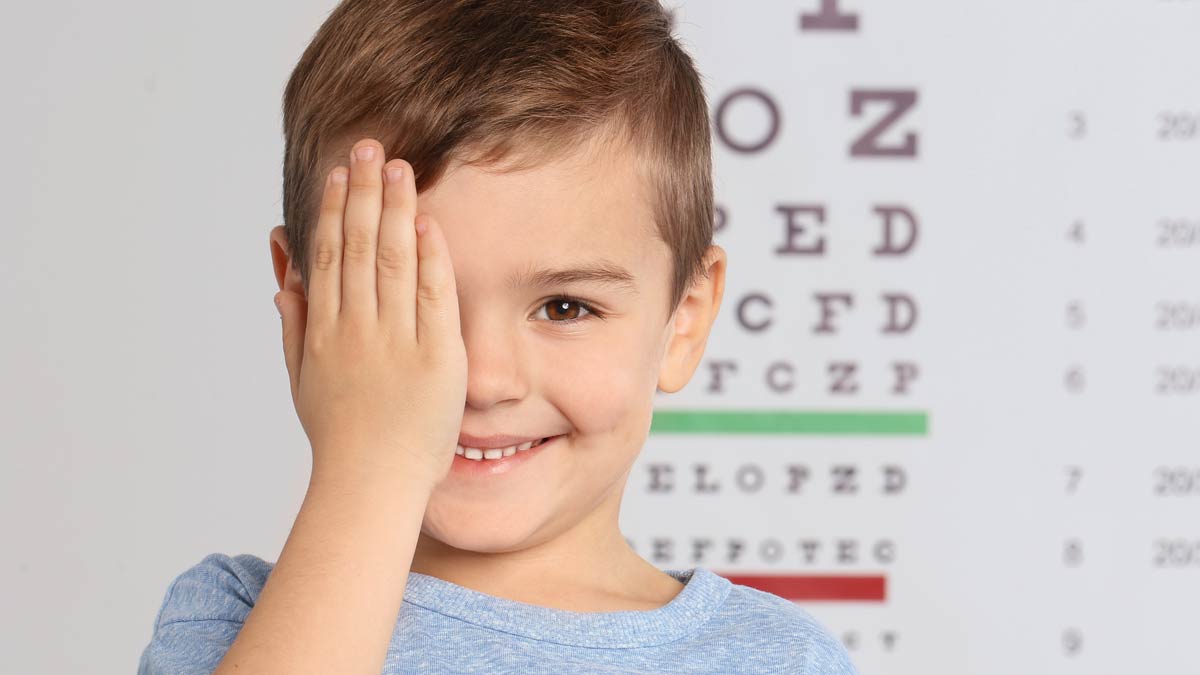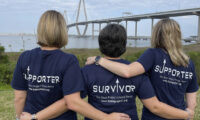Most kids get preventive care for their teeth, making that initial and subsequent trips to the dentist long before they suffer their first toothache. But even though 80% of what we learn is through vision, many parents are unaware that eye care is necessary or even available for young children. As a result, many vision problems remain undetected until youngsters start school – or later.
Too many students have their first eye exam at age 10, have lost 20/20, get glasses to see far away and require stronger glasses every year as they become more nearsighted,” Dr. Jerge added.
Dr. Jennifer Zolman, an optometrist with Draisin Vision Group in Charleston, pointed out that infants and young children often suffer from amblyopia – also known as lazy eye – without their parents knowing it. Their eyes have difficulty working together, they lack depth perception and they might appear to be clumsy.
“If babies can’t see, it affects all their developmental milestones, such as learning to walk, talk and reach for objects,” Dr. Zolman said. “They use vision to interact with the world around them, but, if they can’t see their parents’ lips moving, they might be diagnosed with hearing or speech problems.”
According to Dr. Jerge, signs that young children might have undiagnosed vision problems include closing one eye, turning their head to one side, reading too close to the page, using a finger to follow words, reversing letters and numbers, headaches and a short attention span. Dr. Zolman added that poor reading comprehension, skipping lines, re-reading lines and the inability to recognize words they should know also are signs that something is amiss with their eyes.
She pointed out that in many cases, when children’s eyes are checked at school or by a pediatrician, visual acuity – whether the child has 20/20 vision – is all that is considered.
“Most of what children are learning is not across the room. It’s in front of them. They need their eyes to track and focus,” Dr. Zolman pointed out.
She said vision problems often are mistaken for attention deficit hyperactivity disorder, or ADHD, adding that if children are uncomfortable trying to absorb information from a book or a computer, one of two things will happen. They either give up and appear to be daydreaming or acting out, or they will be determined and motivated and, as a result, they get headaches, fall asleep while reading, take much longer than necessary to complete their homework and can’t remember something they just read.
“Kids with vision problems often become juvenile delinquents,” Dr. Jerge added. “If they are having trouble in school, they find other ways to interact.”
Back to preventive vision care: When should a child make his or her first visit to the optometrist? The American Optometric Association recommends a comprehensive eye exam before age 1, at age 3 and before starting kindergarten. Both medical professionals agreed that children can wear prescription lenses at a very young age. Dr. Jerge said glasses can be helpful for 3-year-olds if they’ve already started to read. Dr. Zolman, meanwhile, pointed out that she prescribes glasses for infants.
“It doesn’t matter what age they are,” she commented. “If an infant has a vision problem, glasses can make a huge difference. It’s especially important if one eye has a different prescription than the other eye. If that isn’t corrected, it can lead to problems.”
“Many kids who don’t like to read may benefit from reading glasses,” Dr. Jerge added. “Too many students have their first eye exam at age 10, have lost 20/20, get glasses to see far away and require stronger glasses every year as they become more nearsighted.”
Dr. Zolman said contact lenses can be prescribed when a child is responsible enough to complete the necessary hygiene routine, generally at the age of 8 or 9. She added that “if there is a medical condition or other reason that an infant needs contacts, we can teach parents to put them in and take them out.”
“You have to get a clear image on the back of the eye so children can develop properly,” Dr. Zolman added. “That’s why early intervention exams are so important.”
The InfantSEE program, a partnership of Johnson & Johnson and the American Optometric Association Foundation, is helping to convince parents that preventive vision care is necessary.
Under the program, youngsters between the age of 6 months and a year can receive a free comprehensive eye assessment from a participating optometrist.
Both doctors agreed that the InfantSEE program is moving eye care in the right direction and that early testing and preventive care are the keys to better vision later in life. However, eye care for young children still hasn’t caught up with preventive dental and medical care.
“If you want to play a sport, you have to go through a physical,” Dr. Jerge said. “The vision tests at school are inadequate and not preventive. Kids are not visually ready for school. We’re trying to change the perception that parents have.”
By Brian Sherman








